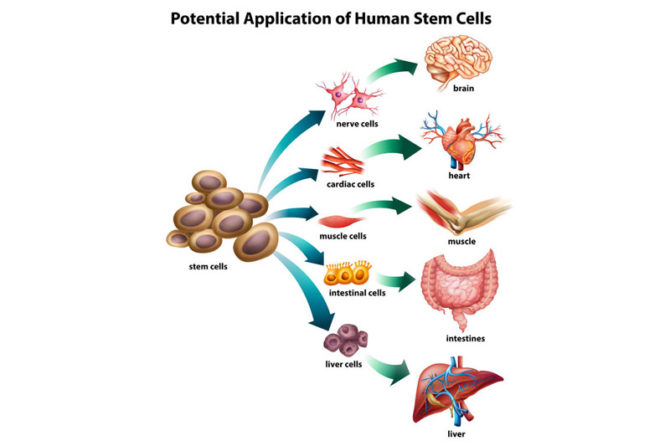
6 Spine Technology Highlights
Technology Highights from the 32nd Annual Meeting of the North American Spine Society
Ocular surgeon sees spine market with an eye for healing
SpineUniverse met with Thomas Dugan, Chief Executive Officer of Amniox Medical, a TissueTech Company that was founded by Scheffer Tseng, a MD, PhD, ocular surgeon in Miami. Tseng was the first to commercialize amniotic membrane for clinical use (Bio-Tissue). The company draws on a 25+ year history of extensive and continuous research, much of it NIH funded, that provides the scientific underpinning of their technology.
Today, the amniotic layer and umbilical cord’s unique regenerative and healing properties are utilized to improve microdiscectomy outcomes (via the newly launched RESPINA brand). In a recently published article in Clinical Spine Surgery, Anderson et al studied 80 patients who were randomized in a 1:1 ratio to receive cryopreserved amniotic tissue (cAM) or no tissue at a single site following lumbar microdiscectomy.1 “The cAM group had statistically significant improvements and zero re-herniations at the 2-year follow-up, and Amniox has committed to following these patients to 5-years,” Dugan indicated.
Dugan also commented on new research “showing an anti-inflammatory impact, and that HC-HA/PTX3 [novel regenerative matrix from the placental tissue] also shows promise in significantly reducing back pain.” An injectable form of the product may have broad pain indications, and patients are reporting greater pain relief than from corticosteroids.
Reference
1. Anderson DG, Popov V, Raines AL, O’Connel J. Cryopreserved amniotic membrane improves clinical outcomes following microdiscectomy. Clin Spine Surg. 2017 Nov;30(9):413-418.
Molding an optimal platform for bone growth
“As the synthetics’ field continues to evolve, technology has also improved so that you can try to mimic, as much as possible, the properties of bone, and recreate the natural scaffold for cells, other growth factors and other key constituents of the human body to facilitate the remodeling process—this will actually help to optimize bone formation,” stated Samson Tom, PhD, Vice President, R&D of Bioventus. His comment led to a discussion about biomaterials, and an interesting demonstration by Steven Moore, Director of US Marketing.
The demonstration involved a new product called OSTEOMATRIX+, which is a novel strip comprised of three primary components (beta-tricalcium phosphate, hydroxyapatite, and collagen). The reabsorption rate of each mineral differs, and that helps to initiate and facilitate the repair process. “If you have something that remodels too quickly, then obviously you’re not offering a three-dimensional architecture that’s required for proper bone healing to occur. So we’ve optimized the ratio of the two minerals in this particular strip,” stated Moore. “In addition, our processing methodology for the collagen component results in handling properties that are very unique compared to many other grafts that are out there today,” he said.
Rehydrating the strip displayed its fluid uptake capability mimicking potential bone marrow aspirate uptake in a surgical setting. Its ability to be easily molded helped demonstrate how it may enable bony contact and eliminate voids. “It’s a strip that acts like a putty,” stated Moore. Furthermore, “It retains its integrity … it does not fall apart,” Tom commented.
OSTEOMATRIX+ from Bioventus will be available in the spring of 2018.
Eliminating doubt about robotic-guided spine surgery
Mazor Robotics, an industry leader for 16 years, demonstrated its Mazor Core technology and presented results from its MIS ReFRESH prospective comparative study during NASS 2017.
Dr. Doron Dinstein, the company’s Chief Medical Officer, explained Mazor Core’s key technologies—its surgical planning suite’s 3D analytics and virtual tools, anatomy recognition software and cross-modality registration that collectively provides surgical predictability and precision. “Mazor Core is clearly differentiating what we do from navigation-based systems,” Dinstein stated.
The MIS ReFRESH multi-center study enrolled 379 patients; 287 were in the robotic-guided arm, and 92 were in the fluoro-guided arm. Christopher Good, MD presented the results, which were significant. In the robotic-guided arm, surgical complications were reduced 5.3-fold using the Mazor Core Technology. Furthermore, the revision rate fell 7.1-fold.1
Reference
1. Schroerlucke SR, Wang MY, Cannestra A, Good CR, et al. Complications and revision rates in robotic-guided vs fluro-guided minimally invasive lumbar fusion surgery. North American Spine Society, 32nd Annual Meeting, October 25-28, 2017, Orlando, FL.
Versatile surgical patient positioning platform
Mizuho OSI® introduced its Levó Head Positioning System during the North American Spine Society’s Annual Meeting. Tina Dendrinos, Manager of Product Marketing demonstrated the technology’s additional capabilities for spine surgery. Mizuho OSI is a US-based company and subsidiary of Mizuho Corporation in Tokyo.
Levó’s electromechanical technology powers its ability to set and maintain precise head positioning throughout surgical procedures involving all spinal levels—cervical to sacral. Intraoperative adjustments are easily achieved using the Control Handles and does not require the surgeon or the team to break scrub or compromise the sterile field. Modular components, such as the Dual Motion Base, which allows both longitudinal and lateral movement, and the Prone Platform, which supports a face cushion, provide for different types of patient positioning as required.
“The development team focused on designing a technology that directly addressed the need for improved head positioning capabilities. We are excited to bring our users a new level of control and precision powered by the device’s electromechanical design,” Dendrinos stated.
Where every single millimeter matters
The ORBEYE video microscope is a game-changing surgical technology developed through a partnership between Sony and Olympus. SpineUniverse met with James Lockwood, Director of Marketing Video Microscopy at Olympus America Inc., who demonstrated this “first of its kind” end-to-end 4K, 3D surgical visualization system offering a broad color gamut for tissue delineation.
“The premise is that with traditional surgical ocular microscopes, both the patient and surgeon positioning has to adjust to accommodate the microscope. But with ORBEYE, you have complete freedom of movement and angulation—visualization adjusts to the surgeon’s and patient’s position,” stated Lockwood. The surgeon operates in a natural stance; standing heads-up to view a 55-inch, 4K, 3D monitor—which is ergonomically advantageous considering the duration of some surgeries. Furthermore, Lockwood stated, “The 4K, 3D camera has a very small profile that opens up the surgical field for instrumentation, and its optics offer a high degree of magnification capabilities—up to 26 times optical sight—to visualize neural structures or bony elements.”
3D-printed cervical implant “engineered for bone”
Stryker’s Spine Division introduced its Tritanium® C Anterior Cervical Cage at the 32nd Annual Meeting of the North American Spine Society. We learned that while additive manufacturing may seem to be a recent development, Stryker set out as early as 2001 to industrialize 3D printing for healthcare. According to Stryker’s backgrounder, “The unique porous structure is created to provide a favorable environment for cell attachment and proliferation … and the Tritanium material may be able to wick or retain fluid.”
“This is another great product by Stryker that brings revolutionary technology to the operating room. With many product sizes and lordosis options, I felt like I could truly match the anatomy and needs of the patient with the implant. I look forward to using the Tritanium C Anterior Cervical cage product in more spinal surgeries and being part of the success that this new technology will bring to my patients,” stated Lance C. Smith, MD. Dr Smith is an an Orthopaedic Surgeon at McBride Orthopedic Hospital in Oklahoma City, OK.









I like that you talked about robotic spine surgery and how it has helped reduce complications by about 5.3-fold. I think that is a great option for those with very complex conditions to give them a chance to have a normal life. With the advancement of technology, more patients might have a chance in life that can help them achieve the dreams they actually have which were stunted because of their illness.
Reply